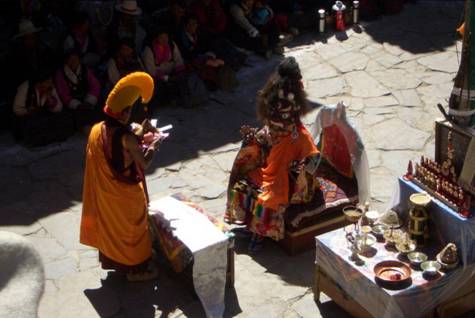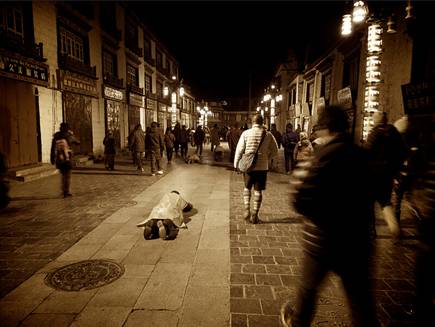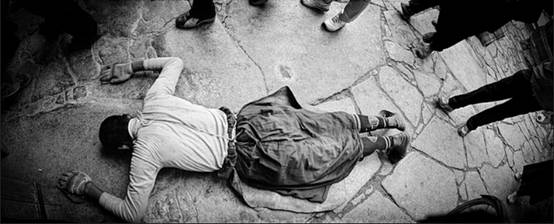The origins
The Saga Dawa festival is celebrated on the 15th day of the 4th month of the Tibetan calendar and is one of the most important religious festivals celebrated in Tibet.
The Saga Dawa festival also called the Buddha auspicious day, coincides with three important events in Sakyamuni's life, namely his birth, enlightenment and nirvana on the full moon day.
Therefore, the whole month is regarded as the holiest month to commemorate the Buddha, with the 15th being the most important day of the month. We can see everyone chanting prayers and trying to worship the gods on that day.

A monk is offering sacrifice like fruit and food to please the gods at Saga Dawa Festival.
Kora
Kora, also known as religious circling, is a form of worship in Tibetan Buddhism and pilgrims circle around some holy routes and pray.
The most spectacular scene of Kora is on the Lingkhor street. There are three routes of kora in Lhasa. One is on Nangkhor, which is the internal route with circling around the main hall in the central of Jokhang Monastery. The second one is on the Barkhor Street, which is the central route around Jokhang Monastery. The last one is on the Lingkhor, which is the external route around old Lhasa city.
Pilgrims make kora on Nangkhor and Barkhor Street every day, while people will only make their pilgrimage around Lingkhor on most important days.

A Pilgrim prostrates himself on the Barkhor Street.
At the beginning of the Saga Dawa Festival, the Lingkhor road is crowded with pilgrims. The Kora will reach its summit on the 15th day of the 4th month of the Tibetan calendar, which lasts from 2 am until evening.

A devout prostrate on Lingkhor road.
